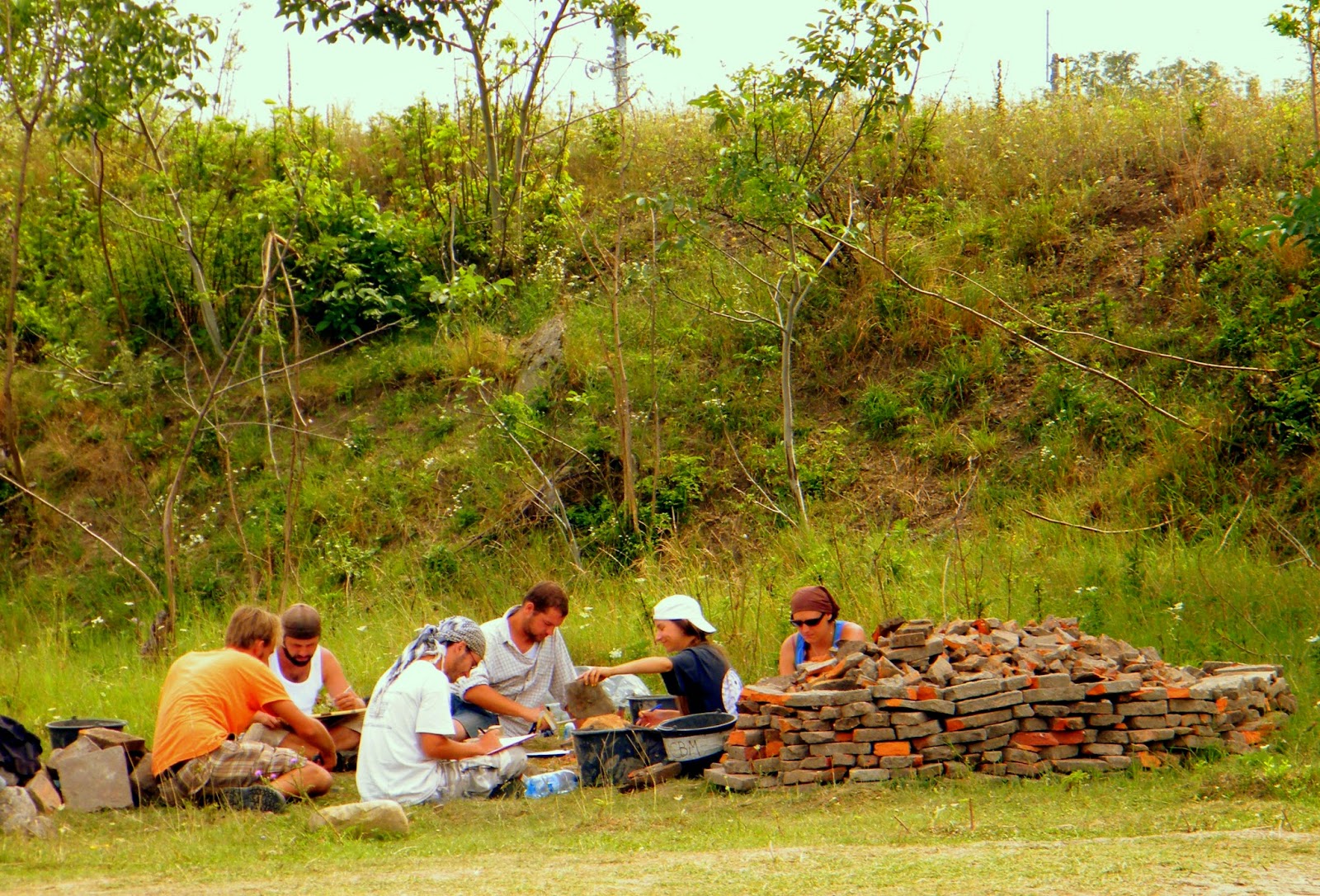Another part of the excavation is the CBM - Project. CBM stands for "ceramic build material" and means the work with bricks and tiles. In many cases this material is quite underestimated even if it can offer many interesting points to support the interpretation of a site.
In a small context this can be a way to explain, in which ways ceramic build material was used to construct a structure. Maybe just a roof was made out of tiles or maybe just bricks were used to construct a floor or the frames of the windows. It gets more interesting, when you can figure out a re-use of material, as like you see by recording the material: For example at a certain point of a wall you see a huge amount of broken roof-tiles which originally belonged to a roof. This could point on for example on a later repairing phase in the history of the structure. For all this questions your local CBM-Team is ready to help you out!
Also in a larger context CBM can be quite useful: by analysing the material you get to be able to figure out connections between different structures. Maybe you are not able to date a single structure because the site offers you not a single clue, but by material analysis, stamps on the material etc. you can make a connection to another structure which is maybe several kilometres away and which can be dated. In this way you could get at least an approximate hint in which time your first structure could be dated.
How to analyse the material? For this you need samples for types and fabrics and by them you can record all the pieces you find during excavation. The pieces get measured by length, width and height and they get checked by type and by material. All this you record on recording sheets and later on you can see in a database how much of which material and which different types you found at your site. Than you should be able to give underlining information for the interpretation of the excavated structure.
















